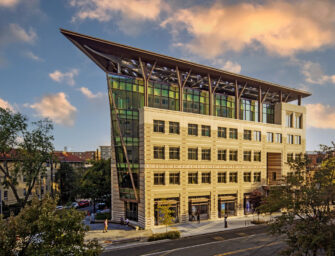Looking to the Past and Looking to the Future: Thoughts on Science and Women’s Equality Day
On 21 August, 2017, a solar eclipse swept across North America. Many AGU members were observing this wonder of our universe using everything from cutting-edge instruments to cardboard glasses ordered online. How different the faces studying the geophysics are now than they were in 1878 when Maria Mitchell of Vassar College was explicitly not invited to join the government supported expedition observing an eclipse. Refusing to miss the chance of a lifetime, Mitchell assembled her own all female team for the occasion. As a child, I took geeky books out of the Maria Mitchell Library in Nantucket, near where she had discovered a comet. I grew up understanding that, of course, women could be scientists, lead expeditions, and discover things.
The picture when I started graduate school grew a little dimmer. There were no women faculty and some disciplines still were excluding women from doing fieldwork. Even in the areas of academia which women were allowed to study, there was no pushback against the frequent sexual harassment that many women faced. Unfortunately, not all of my graduate student friends have stayed in the field. Some were marginalized and some have disappeared from science entirely. This attrition, the result of harassment and a lack of real mentoring, bothered me. With few senior women in mentorship roles, a group of female graduate students took it upon themselves to create a peer mentor network. Looking back, I see how important this effort proved to be.
These women now have their own satellites, have instrumented entire continents with GPS networks, have discovered how volcanos work, have decoded the pace of climate change in the past, are leading some of the biggest labs in the world, and have written some of the most influential reports on science. These women are my modern-day heroes in the Earth and space sciences and beyond. Many of these women are also today’s AGU leaders.
At the time, another thing that helped change the scientific climate and increase the likelihood that more women who entered science would stay in the field came in 1999 with the publication of the report entitled “A Study on the Status of Women Faculty in Science at MIT.” This report found that even the most prominent women scientists at MIT had smaller labs and less access to money that their peers. In the wake of this report, I was able to take advantage of federal investment in changing science and engineering ecosystems.
In 2001, the National Science Foundation developed the ADVANCE program that provided funds to “increase the representation and advancement of women in academic science and engineering careers, thereby contributing to the development of a more diverse science and engineering workforce.”. We secured one of the early ADVANCE grants at the Columbia Earth Institute, the first ADVANCE program that focused on the unique challenges associated with our discipline including fieldwork.
While the impact of the Columbia ADVANCE program probably has been greater than the impacts of any of my science expeditions, leading this program was very challenging. Talking about our implicit biases and how we make decisions is hard. Science tends to favor men with fewer qualifications over more qualified women. Learning how we make decisions and how we describe men and women different in recommendation letters is a big step towards leveling the playing field for everyone. After significant effort, the scientific environment at the Lamont-Doherty Earth Observatory | and the Earth Institute is better for all scientists, whether male or female.
Today, although there remains work to be done to reach full gender parity in the sciences, new graduate students see a very different landscape than the one I saw 35 years ago. The Lamont faculty now has many women at all levels and leadership positions. Students are no longer leaving their mentoring to chance. Like my daughter who is starting graduate school in physics in January, this generation of female scientists is demanding that their institutions and professional societies provide them with mentoring and the full range of skills that make it possible s to succeed in science at the highest levels.
Imagine how excited Maria Mitchell would be today to see how many women scientists many of whom wore cardboard glasses to gaze at this week’s total solar eclipse, are now leading the scientific enterprise in 2017.



There are no comments
Add yours